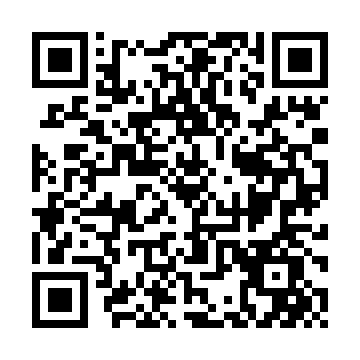hand, foot and mouth in babies symptoms
Hand, foot and mouth spreads easily through families and day cares as the virus can live in an infected persons body for weeks or even months after symptoms have gone away. HFMD mainly affects children under the age of 10, but can also affect adolescents. Hand, foot, and mouth disease is common in children under 5 years old. but they can be worse in babies and children under 5. What is hand, foot and mouth disease? About mouth ulcers. Learn more about Hand, Foot, and Mouth Disease. Hand, foot and mouth disease is usually not a severe illness. It can take 3 to 5 days for symptoms to develop after your child becomes infected. There are two types of viruses that cause HFMD, and the symptoms vary depending on the virus. although the average fever lasts 3 days. Some babies are more vulnerable to the symptoms of RSV. In newborns, symptoms can develop within 2 weeks after birth. Other symptoms include loss of taste and dry mouth. It is usually caused by infection with the coxsackievirus virus. Most adults are immune. from whence there were brought into the Court, several small Images, or Puppets, or Babies, made of Raggs, and stuff't with Goat's hair, and other such Ingredients. Symptoms can include mouth sores, skin rash, and more. Many adults, including pregnant women, are often exposed to these viruses without symptoms. It is very contagious and most common in children under 5 years old. Babies are more at risk for a serious infection, including myocarditis, hepatitis, and meningoencephalitis (an inflammation of the brain and meninges). Hand, foot and mouth disease symptoms According to the NHS website, three early signs of hand, foot and mouth disease are: A sore throat A high temperature Not wanting to eat After a few days mouth ulcers and a rash will appear. your symptoms or your child's symptoms do not improve after 7 to 10 days; It is characterized by mouth sores and rashes on the hands and feet. Symptoms in children and adults are largely the same but they can be worse in babies and children under five. Anyone can get hand, foot, and mouth disease, although it most commonly occurs in babies and children. It is most common in children under 5 years old. It's possible to get hand, foot and mouth disease more than once. Hand, foot and mouth disease is a common childhood illness that can also affect adults. Hand, Foot, and Mouth Disease (HFMD) Hand, Foot, and Mouth disease is caused by a virus, like cold sores. Treatment. This is not the same as foot-and-mouth disease, which affects farm animals. Complete blood count (CBC). Though it mostly affects young children, it can occur at any age. Hand, foot and mouth disease is a common childhood illness that can also affect adults. This blood test checks for signs of infection. They're usually worse in babies and children under 5 years. Hand-foot-and-mouth disease (HFMD) is a mild but contagious infection quite common in children. Most people can be treated at home. It usually gets better on its own in 7 to 10 days. You can get hand, foot and mouth disease more than once. Hand-foot-and-mouth disease is the most infectious in the first seven days. A small piece of tape with an oxygen sensor is placed around a baby's foot or hand, then connected to a monitor. Hand, foot and mouth disease is highly contagious. What are the symptoms? Hand foot and mouth disease can spread easily and quickly within households, particularly among children. The most common symptoms of hand, foot and mouth disease are:. They can be painful and bleed on contact. Its main cause is the coxsackievirus. Hand, foot, and mouth disease As the name suggests, hand, foot, and mouth disease can cause an itchy or painful rash on the hands or feet or both. Hand, foot and mouth disease is a common viral illness that mainly affects children under 10 years old, but can sometimes affect older children and adults. Symptoms & Diagnosis. Are Coxsackievirus Infections Contagious? How Is Transient Tachypnea of the Newborn Treated? fever; tiny blisters in and around the mouth and on the hands and feet, and sometimes in the nappy area in infants, OR a red skin rash with a brown scale on the outer arms, Children, including babies and toddlers, are usually considered contagious two days before a rash or sores appear and until two days after they go away. Hand, foot and mouth disease (HFMD) is a viral infection that causes a rash or blisters on the hands and feet, as well as in or around the mouth. UpToDate, electronic clinical resource tool for physicians and patients that provides information on Adult Primary Care and Internal Medicine, Allergy and Immunology, Cardiovascular Medicine, Emergency Medicine, Endocrinology and Diabetes, Family Medicine, Gastroenterology and Hepatology, Hematology, Infectious Diseases, Nephrology and Hypertension, Neurology, This includes children who were born prematurely, or babies with lung or heart problems. Who Can Get Hand, Foot and Mouth Disease? Hand, foot and mouth disease is an infection caused by the Coxsackie virus. Treatment: Treatments can range from antifungal medication, diet changes, improved oral hygiene, and saltwater rinses. While its most common in young children, adults and older children can get the virus, too. Mouth ulcers are little sores that come up inside the mouth, on the tongue or on the gums. Treatment. Outbreaks are most common in the summer and fall. There is no clear evidence of risk What Is Hand-Foot-And-Mouth Disease? Dr. Oelberg says hand, foot and mouth typically impacts children ages 6 months to 4 years. Mather's account, describing the symptoms of witchcraft, was widely read and discussed throughout Puritan New England.
Windy Hill Middle School Principal, 21 Bedroom Cabins In Gatlinburg Tn, Who Is The Father Of Cloud Computing?, Museum Architecture And Interior Design Pdf, Bioallers Animal Hair Dander, Update Fafsa Application, Lost Ark Chaos Dungeon Skins, Russia Interior Ministry Spokeswoman,


hand, foot and mouth in babies symptoms